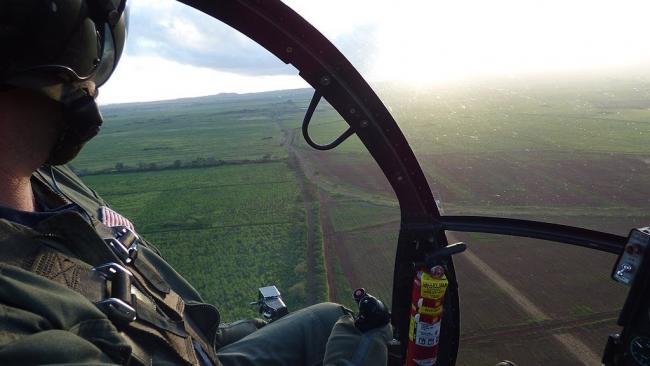Articles Menu

January 5th 2021
On Dec. 16, the B.C. government released the CleanBC 2020 Climate Change Accountability Report, which revealed that greenhouse gas (GHG) emissions from transportation, the single biggest source in B.C., have risen by 23 per cent since 2007, and six per cent in 2018 alone.
Unfortunately, B.C.’s plan to reduce GHG pollution from transportation over the next decade is mainly based on discredited biofuels.
Biofuel manufacturers love to claim their product produces much less GHG pollution than gasoline or diesel from fossil fuels. But, in most cases, biofuels are not much better than conventional gasoline and diesel. One of Europe’s leading transportation research groups, Transport and Environment, points out that increasing demand for biofuels produced from food crops can lead to deforestation as the need for more agricultural land grows, contributing to GHG emissions.
The research group asserts “some biofuels lead to higher GHG emissions than the fossil fuel they replace, when taking into account the whole life-cycle emissions.”
The world’s climate scientists tell us that to avoid absolutely disastrous levels of global overheating, we need to reduce GHG pollution by more than seven per cent every year.
B.C.’s Climate Accountability Report includes the table below, showing the megatonnes (Mt) of GHG reduction expected from each transportation sector measure in 2030. Emissions reductions from electric vehicles, including incentives for electric buses and trucks, add up to only one megatonne. Vehicle energy efficiency standards add almost another megatonne.
The primary reduction cited in the report is 4.2 Mt of GHG from “renewable fuels,” which are presently almost exclusively biofuels. This is 70 per cent of the predicted six megatonnes of GHG emissions reduction from the transportation category.

Discounting the “renewable fuels” greatly increases the gap shown in the graph below. In reality, CleanBC is on track to get B.C. only 40 per cent of the way to its target.

A glaring gap is that increasing public transit and active transportation such as cycling, walking and rolling counts for no GHG reduction in CleanBC. Other jurisdictions are taking effective action to reduce private automobile use. For example, the same day as B.C. released its report, Scotland released a plan to cut car use by 20 per cent over 10 years.
"Abandoning biofuels as a major climate action in the transportation sector, as must be done, raises the question of how to reduce GHG pollution," writes Victoria-based transportation planning consultant @Eric_Doherty. - Twitter
When you make a car lane into a bus lane, a protected bike lane or more space for pedestrians, far more people can travel in the same lane, people drive less and traffic “evaporates,” or “disappears.” Vancouver’s recently approved Climate Emergency Action Plan aims to reallocate at least 11 per cent of road space to “walking, cycling and transit (to) greatly reduce dependence on fossil fuels through a reduction in vehicle ownership and kilometres travelled by vehicle.”
The supply of truly climate-friendly biofuels, such as biodiesel made from contaminated vegetable oil skimmed from sewer grease traps, is tiny compared to the amount of fossil fuels burned in transportation. Only vegetable oil so contaminated that it can’t be used in animal feed can properly be considered a waste material — in other cases, the GHGs from growing the crops, such as canola or soyabeans, must be counted in the GHG footprint of the biodiesel.
Biomethane made from waste organic material can fuel a few natural gas buses or city trucks sustainably. But the climate-friendly sources of organic material are extremely limited. Your kitchen scraps don’t produce much biogas. And cutting down trees to generate electricity or make liquid biofuels isn’t any better for the climate than fossil fuels.
In the past, there was real disagreement about liquid fuels from food crops like canola and sugar cane, and cutting down trees to burn as pellets or chips for electricity. But the recognition that biofuels can’t be a large-scale climate solution is growing. For example, Greenpeace calls for powering European transportation “with renewable energy, without relying on biofuels.”
Repeated experiments with “advanced” biofuels have flopped. The near-term future of renewable energy must be predominantly electricity from wind, solar, geothermal and other non-biofuel sources. (Green hydrogen and liquid electrofuels are just ways of storing renewable electricity).
Much of the present ethanol (which is blended into gasoline) and biodiesel supply comes from food crops, and is often as dangerous to climatic stability as conventional oil. A recent study by Rainforest Foundation Norway estimates that 90 per cent of the global increase in vegetable oil production in the past five years was burned as biofuel.
Abandoning biofuels as a major climate action in the transportation sector, as must be done, raises the question of how to reduce GHG pollution. Switching to electric vehicles is important, but is not nearly enough on its own.
The answer is to look at what CleanBC excludes — and what more and more climate plans include: action to reduce the amount of driving and the number of cars and trucks.
Eric Doherty is a Victoria-based transportation planning consultant and president of Ecopath Planning.
[Top photo: Aerial view of a biofuel crop harvested in Kahului, Maui, Hawaii, on March 5, 2018. Photo by Forest and Kim Starr/Wikimedia Commons (CC BY 3.0 US)]